On May 28, Premier Andrew Fahie unveiled a long-awaited stimulus package after two and a half months of promises and delays, outlining $62.9 million worth of spending designed to help the stalled economy through the Covid-19 pandemic.
Since then, he and other leaders have been tight-lipped about the programme, but their sporadic updates suggest that no more than $11 million has gone directly to residents and businesses in need.
The actual figure, however, could be much lower: The status of most stimulus funding is unclear, and the Beacon’s attempts to learn what was spent — and how — mostly have been met with silence in spite of numerous requests over several weeks to the premier and other officials.
Meanwhile, many residents and businesses have been crying out, and the territory’s social services have been overwhelmed by urgent requests from people struggling to make ends meet in an economy decimated by the tourism closure and other pressures brought by the pandemic.
Government leaders have defended the stimulus measures and asked for patience as they tackle various challenges, but Opposition Leader Marlon Penn told the Beacon last week that the package has “grossly missed the mark” so far and has been “laden with bureaucracy and poor implementation.”
“The stimulus announced May 28, which was designed to help with three months of support, has lingered beyond that period, with the [Covid-19] crisis going on almost its ninth month,” Mr. Penn explained. “Many families and businesses are yet to get support from either the businesses support or income relief programme. I know families who are experiencing extreme hardship.”
Stimulus package
The bulk of the $62.9 million stimulus package falls under a $40 million grant from the Social Security Board, which the SSB turned over to government on July 3. Officials have said this money would provide funding for various measures: $10 million for an unemployment relief fund; $9 million to repair homes damaged by Hurricane Irma; $6.5 million in business grants; $7.5 million to help the underfunded National Health Insurance programme pay its debts; and six $1-2 million allocations targeting social needs and industries including hospitality, taxi and livery, daycare, fishing and farming.
The $10 million unemployment fund, which was among the first programmes rolled out, started accepting applications on June 2. But it has been beset with delays since then, and officials have not provided updated information for nearly a month.
The most recent update came on Sept. 23, when Natural Resources, Labour and Immigration Minister Vincent Wheatley told the House of Assembly that about $4.4 million had been disbursed to 3,457 applicants as of Sept. 17. A total of 2,117 claims had been denied, and 2,072 applications were still processing, he said, adding that many applications had been delayed due to employers’ errors.
“I acknowledge that there are persons yet to receive the benefit, but this is not due to lack of effort on behalf of the Social Security Board,” Mr. Wheatley told the HOA. “It is mainly due to the lack of salary information from employers.”
He added that the application process had exposed many employers who have been breaking the law.
“There are hundreds of employers who continue to deduct from the employees and do not remit the contributions to the [SSB],” he said. “These employers are also in violation of the Labour Code by not giving their employees pay slips. Thus, this lack of information has led to the inability of the SSB to calculate and pay benefits.”
He added that the ministry would “continue to do [its] best to assist all beneficiaries as best [it] can.” However, it is unclear whether more unemployment assistance has been disbursed since the Sept. 23 update, and attempts to contact Mr. Wheatley were not successful. SSB Director Antoinette Skelton said she and SSB Chairman Ian Smith were not available for an interview, and Mr. Smith did not respond to requests for comment.
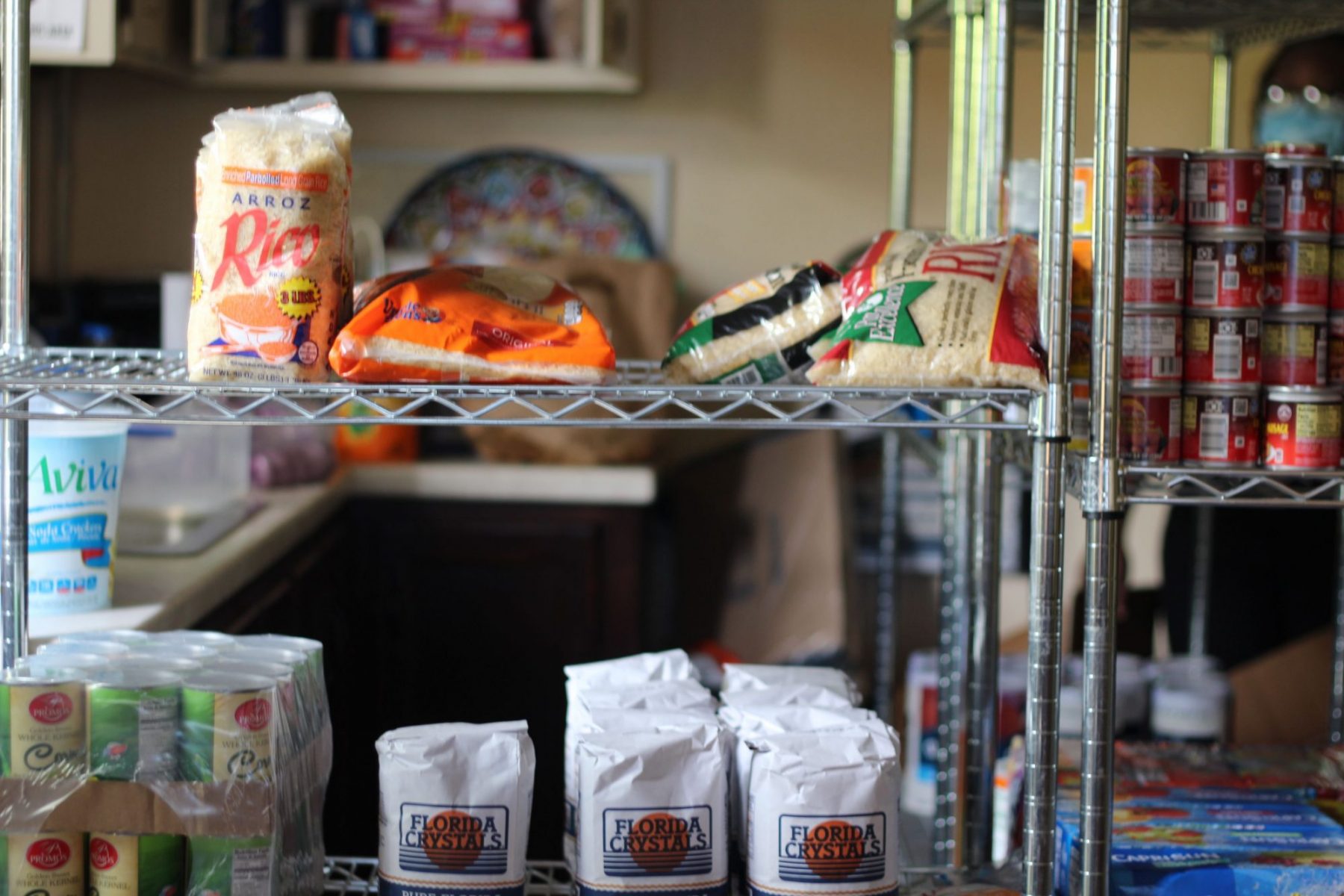
Too little?
In recent weeks, some applicants for unemployment assistance have complained on social media that they never received aid even though they believe they were eligible, and others said the money they did receive was insufficient.
Jessica Mikoleiczik, who lost her job as a front desk concierge in a charter company based in Nanny Cay in March, said she has been unemployed for more than six months.
“I only got [a stimulus cheque] a month ago. It was a little less than a month and a half’s pay,” she said.
Since her family owns villas in Carrot Bay, Ms. Mikoleiczik doesn’t have to pay rent or related bills. Otherwise, she said, she would “have to sleep on people’s couches.”
Residents’ struggles are putting pressure on the territory’s social safety nets as well. On Oct. 14, Family Support Network Director Maris Hodge-Wright took to Facebook to urge the community to help stock the non-profit organisation’s food bank. Over the two previous days, she said, $4,000 worth of groceries had been cleared from the pantry shelves.
FSN administrative assistant Deidra Massicot-Rivera explained Monday that the organisation has seen a surge of residents requesting food and rental assistance since the pandemic hit.
“We have more clients that are unemployed as the effect of Covid-19, or they’re on half salary and they can’t afford to buy food,” she said. “The [donations] that we were getting could’ve lasted us a month or a month and a half: Now they aren’t lasting even a week.”
Business grants
Like the unemployment initiative, the $6.5 million business grants programme has been beset with delays as well.
Applications initially were supposed to be available on June 15, but the process didn’t open until the end of July.
Eligible businesses — those with 20 or fewer employees — had until Aug. 21 to apply for assistance, and on Sept. 22 the premier announced that 1,039 of them would receive grants ranging from $1,592 to $7,955. He also published a table of awards by district, showing a total of $6,138,899.
Businesses were soon complaining that they had not received their awards, but the premier said on Oct. 8 that 100 cheques had been distributed and 400 more were slated for distribution by the next day.
Since then, however, officials have not confirmed if they distributed those cheques as planned or how much of the $6.5 million has been disbursed.
They also have not announced when they plan to distribute the remaining 539 grants, and they didn’t explain in detail why nearly 400 of the total 1,423 applicants were unsuccessful.
Attempts to reach Karia Christopher, the director of the Department of Trade, Investment Promotion and Consumer Affairs, were not successful. An employee at the department said all relevant and up-to-date information has been disseminated already, though they didn’t specify where.
Grant size questioned
Keiyia George, executive director of the BVI Chamber of Commerce and Hotel Association, said many businesses have complained about the size of the grants. Even the largest of nearly $8,000, she explained, would not mean much to the larger businesses that meet the eligibility criteria. One such business contacted Ms. George in August with grave concerns, she said.
“What they indicated to me is that they don’t think they’ll be able to open, if at all, because four figures is not enough to open or bounce back,” Ms. George said. “That’s what they told me when I told them the range was between $1,000 and $7,000. They were hoping for five figures.”
Smaller programmes
The $40 SSB grant also included six $1-2 million initiatives that may have provided at least some funding to residents and businesses in recent months. But many details remain unclear.
One million dollars was earmarked to address traffic congestion in Road Town, provide a “park-and-ride” system, and assist taxi operators. Government subsequently launched a free shuttle service stretching from Prospect Reef to Purcell.
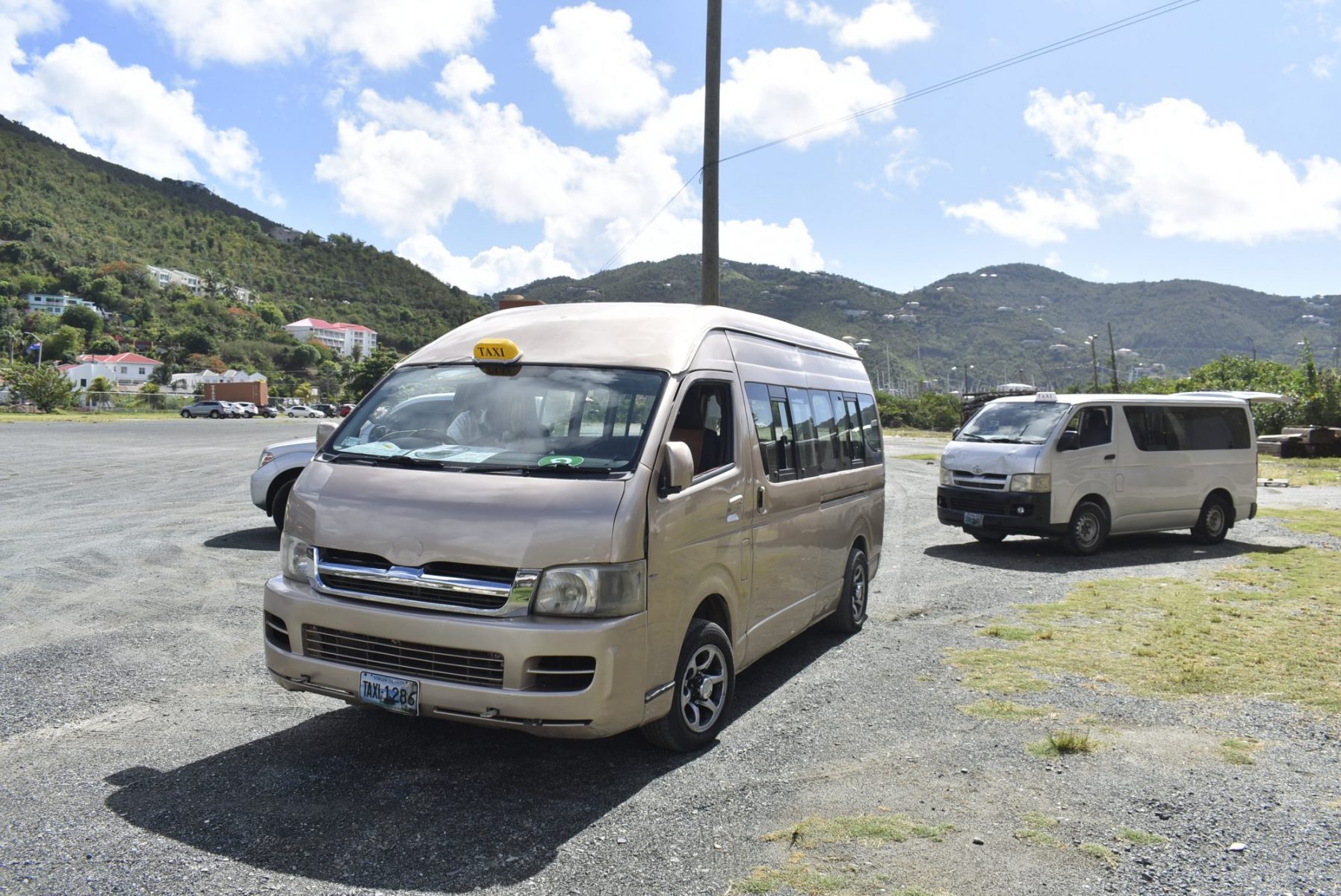
“A lot of the guys who didn’t have any other source of income, some of them were able to play a part in that. Right now it’s still going on,” taxi driver Sam Henry said last week. “What the government is trying to do is implement a complete park-and-ride. Overall, it’s a good idea if you want to eliminate traffic and turn Road Town into a pedestrian-friendly environment.”
He said government has included many taxi drivers in the programme, and that the work is being done in a rotating schedule.
Government, however, has not provided a comprehensive breakdown of the spending on the shuttle system or other traffic initiatives.
Farmers
Another prong of the $62.9 million stimulus — $2 million for farmers and fishers — has not paid out anything yet, according to Deputy Premier Dr. Natalio “Sowande” Wheatley, who told the Beacon last week that the government is “getting ready to launch” the programme.
Aragorn Dick-Read, a farmer who applied for assistance in March, said he hasn’t heard back from government. “Nothing has been given out, I don’t think,” he said. “I heard the premier say some had been given out, but none of the farmers I know got anything.”
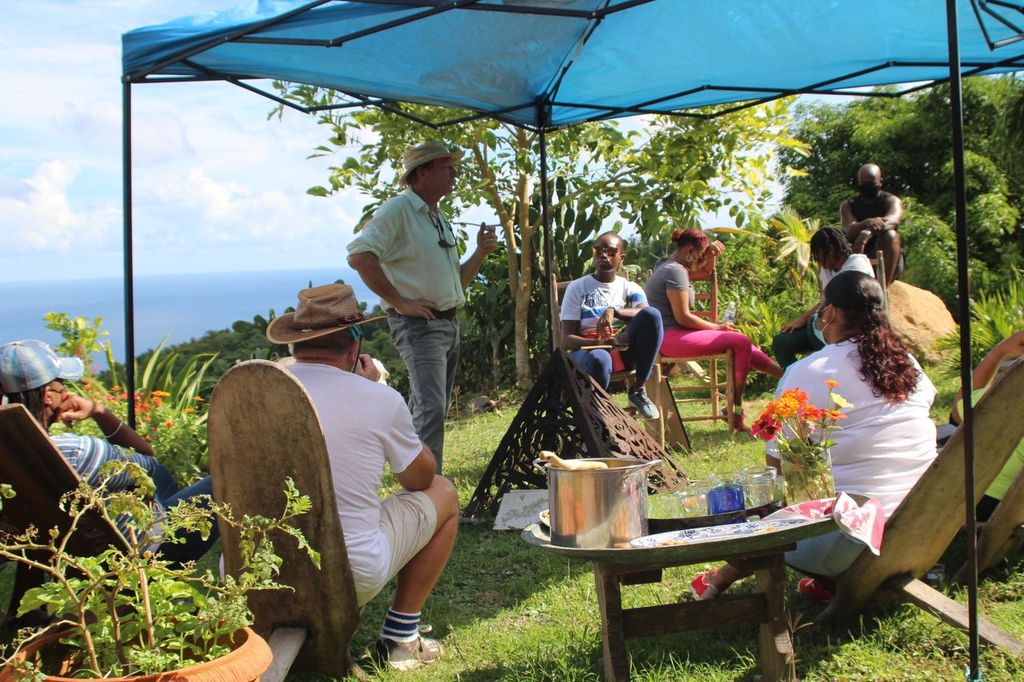
Part of the reason for the delay, he believes, could be that many people applied for assistance even though they aren’t commercial farmers.
“[A friend of mine in the department showed me] a book when I first applied and I saw pages and pages of people who applied,” he added. “They weren’t necessarily registered farmers, so I think that’s where things might have gotten stuck.”
Mr. Dick-Read, who runs Good Moon Farm, supplies boxes of produce and meats every week and sells his produce at the farmers market on Saturday mornings.
Social needs
During the launch of the stimulus, the premier also said $1 million would be used to assist residents with “social needs” through a programme monitored by the Social Development Department.
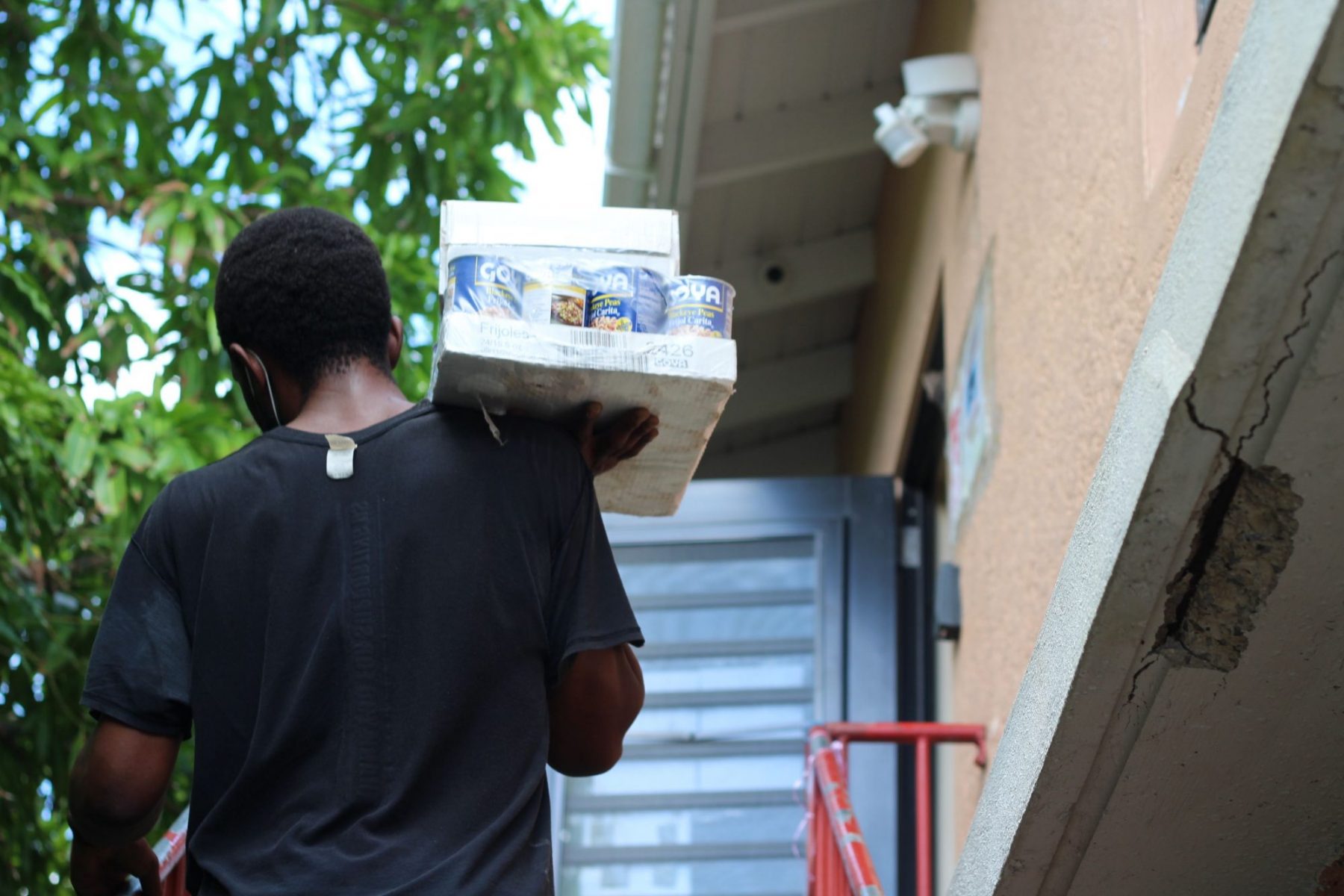
Health and Social Development Minister Carvin Malone later said that stimulus funding had gone toward initiatives like grocery provisioning, food vouchers, feeding services, free water delivery and amnesties on water and electricity payments. However, no comprehensive spending breakdown has been provided, and it is unclear which programmes were funded with the “social needs” allocation from the SSB grant.
Efforts to reach Mr. Malone were unsuccessful.
Other programmes
One of the largest prongs of the stimulus package — a $7.5 million allocation for the National Health Insurance programme — was earmarked to pay off government’s own debts.
That money has been “expended,” Mr. Wheatley said in September. Before the payout, he added, the NHI programme’s payments to medical providers were six months behind.
Spending details on the remaining measures under the $40 SSB grant are less clear. No substantive update, for instance, has been provided on the $9 million allocation for post-Irma housing repairs. Government also has been quiet about the $1 million earmarked to help daycares, private schools and religious organisations, though a survey was launched on July 29.
Mystery allocation
During the rollout of the stimulus package in May, Mr. Fahie listed only $39 million worth of initiatives under the $40 million SSB grant. The remaining $1 million wasn’t directly addressed.
However, a July 9 SSB press release — which announced the July 3 handover of the $40 million grant to government — noted a new prong of the stimulus: “a consultancy involving the [NHI] which will help ‘change the direction of NHI,’ with a view to save the government” $42 million. No comprehensive updates have been provided.
Affordable housing
Three other programmes under the $62.9 stimulus package fell outside the scope of the $40 million SSB grant. The largest allocation was $17 million for the revival of a pre-Hurricane Irma programme to build affordable homes at Joes Hill.
Though the initiative was not included under the $40 million grant, it is being funded by the SSB under another arrangement reached before Irma.
On May 28 — the same day the stimulus was unveiled — the SSB signed a $17,939,104 contract with James Todman Construction Limited for the project, which is to consist of 25 buildings including 52 residential units and a commercial space. But it is unclear how much of that money, if any, has been spent to date.
Nevertheless, leaders said work is under way. On Sept. 23, Mr. Wheatley announced that construction on 7.414 acres of Joes Hill property began on July 1. As of August, he added, roadways had been cleared and a lower entrance had been created.
Despite setbacks and challenges due to Covid-19 restrictions, “the project is on track and in line with its contracted completion period of 1,275 days or roughly 3.5 years,” he said.
District allowances
Another programme was funded by $3.9 million from central government, which was divided equally among the 13 elected HOA representatives to use to aid their constituents.
Representatives including Alvera Maduro-Caines (R-D6) and Mr. Penn (R-D8) reported that their allocations were quickly used up.
However, government has not provided a comprehensive accounting for this prong of the stimulus, and Mr. Penn said some government cheques promised to constituents are still outstanding.
“A clear strategy and plan to get our economy going again and persons gainfully employed is our best economic stimulus and the only way forward,” he said. “We are already working against time and I further urge government to move with haste.”
Infrastructure
Finally, the $62.9 million stimulus package included $2 million for infrastructure works from a funding source that was not clearly identified. Few details were provided at the time of the launch, and no comprehensive update has come since then.
Chief Information Officer Desiree Smith said she would try to secure an interview with the premier this week, but as of the Beacon’s deadline yesterday it had not been scheduled.
Earlier ‘stimulus’
The $62.9 million package came after two and a half months of promises.
Although it has been the main stimulus launched during the pandemic, Mr. Fahie referred to it during the May 28 rollout as “Phase Two” of a larger plan, and he described earlier Covid-19 response measures as previous “stimulus” efforts.
The first measures to be announced were the suspension of water bills for one month and the $2 million programme for farmers and fishers. Both were first unveiled on March 25, the same day the first two confirmed Covid-19 cases were announced in the territory and a 24-hour lockdown was launched.
After a third case was announced on March 30, officials extended the full lockdown for two more weeks, allowing residents to shop for groceries for three days before it began.
A house-to-house garbage collection programme also began during this lockdown period, funded with money that the premier would later describe as “stimulus” spending.
On April 3, Mr. Fahie promised a larger stimulus package, and said he would ask the United Kingdom for assistance in securing a minimum wage grant. Governor Gus Jaspert, however, said the UK was struggling with its own Covid-19 outbreak and couldn’t accommodate this request. However, he made suggestions for how the territory might fund its own recovery package, noting that the SSB fund was “robust.” He also advised the VI to look into its reserve funds.
Food deliveries
Government planned to relax movement restrictions on April 20, allowing residents to access essential services. But after the death of a Covid-19 patient, government extended the 24-hour lockdown until April 25.
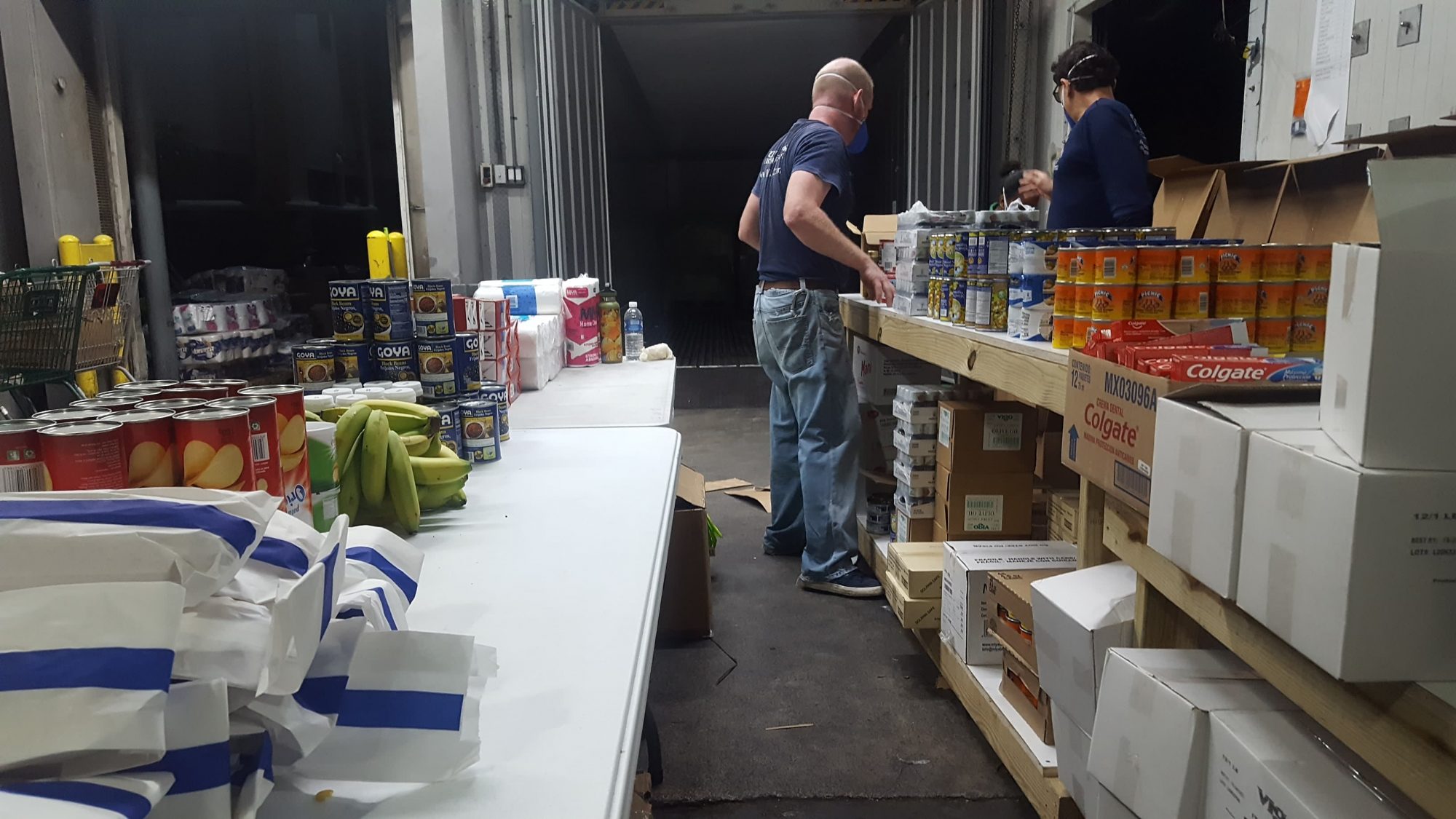
During this time, government decided to provide $2 million — taken from the government’s consolidated fund — for free food deliveries to vulnerable residents. In the days following, government set up an online system where residents could register to receive food packages, and allowed grocery stores to make deliveries to those who could afford to pay.
Mr. Fahie also announced on April 26 that Cabinet had okayed an “interim stimulus framework,” while promising to unveil the package “soon.”
By then, government said, at least 300 workers had been laid off or fired because of Covid-19 and the ongoing lockdown, but this number only reflected businesses that had responded to a request for information: Thousands more unreported layoffs already were likely.
In May, government confirmed that the number of layoffs and terminations reported to government had reached 638 across 77 businesses that responded to a survey.
A phased internal re-opening began on April 27, with businesses allowed to operate between 6 a.m. and 1 p.m. daily after passing inspections by health officials.
But residents would have to wait another month before the stimulus was unveiled on May 28. Since then, borders have reopened in a phased manner: Belongers and permanent residents were welcomed back from June 2, and other categories of residents were officially allowed starting in August and September. Meanwhile, curfew restrictions have relaxed — with a brief reversal during a new outbreak in August and September — and many businesses have managed to operate. A further boost to the economy is expected to come with the Dec. 1 reopening of the borders to tourists.
Defending the package
On Sept. 22, Mr. Fahie stood in the HOA and defended his government’s stimulus package in spite of the challenges.
“We recognised that people did not want government just to give them a handout,” he said while giving an update on the business grant programme. “They wanted to be engaged and to work and provide value for it and to continue building their entrepreneurial spirit as is in the DNA of the people of the Virgin Islands.”
He also noted that “transparency and accountability” were essential to “ensure the effective administration and management of the process.”
Where has the stimulus money gone, if anywhere?
Nearly five months after Premier Andrew Fahie unveiled the $62.9 million stimulus package, the status of many of its programmes is unclear. Most of the initiatives were to be funded by a new $40 million grant from the Social Security Board, the rest by other sources. Leaders have provided only sporadic updates about the programmes’ progress, and the Beacon’s attempts to learn more were largely unsuccessful.
PROJECTS UNDER THE $40M SSB GRANT
$10 million for an unemployment programme: AT LEAST $4.4M SPENT
As of Sept. 17, grants totaling $4,366,488 had been paid out to 3,457 jobless or underemployed residents, Natural Resources, Labour and Immigration Minister Vincent Wheatley said on Sept. 23. A total of 2,117 claims were denied, and 2,072 remained under review. No comprehensive update has been provided since then. More than 6,000 people applied for a grant.
$6.5 million for grants to businesses: SPENDING UNKNOWN
Officials have said that 1,039 grants ranging between $1,592 and $7,955 were approved, but it is unclear how many have been disbursed. On Oct. 8, Premier Andrew Fahie said more than 100 cheques had been delivered during the first week of October and 400 more were slated for distribution by Oct. 9. Since then, however, officials have not confirmed if they distributed those cheques as planned or how much of the $6.5 million has been disbursed in total.
$7.5 million for the National Health Insurance programme: $7.5M SPENT
Mr. Wheatley said last month that this money — effectively earmarked to pay off some of government’s own debts — was paid in full to the NHI programme. Before the payout, he added, the NHI’s payments to medical providers were six months behind.
$1 million for hospitality businesses: SPENDING UNKNOWN
In May, government announced that this allocation would be used to pay properties hosting quarantined residents, but officials have not provided a comprehensive account of any spending or confirmed that they targeted businesses in need.
$1 million for social needs: UP TO $1M SPENT
Health and Social Development Minister Carvin Malone said in September that stimulus funding had been spent on initiatives like grocery provisioning, food vouchers, expanded feeding services, free water delivery, and amnesties on water and electricity payments. No comprehensive breakdown has been provided, however, and it is unclear which programmes were funded with this “social needs” allocation from the SSB grant.
$1 million for taxi and livery drivers: UP TO $1M SPENT
In July, Mr. Fahie explained that the stimulus had been used to engage taxi drivers to provide a free park-and-ride shuttle service in the Road Town area. The service is still operating. The statement did not specify that the allocation was used only for this purpose, and the government has not provided a comprehensive cost breakdown.
$2 million for farmers and fishers: $0 SPENT
This initiative was first announced on March 20, but it was also included in the May 28 stimulus package. Deputy Premier Dr. Natalio “Sowande” Wheatley said last week that government is “getting ready to launch” the initiative.
$1 million for daycares, schools and churches: SPENDING UNKNOWN
On July 29, a survey was launched to gather information from these entities, but no comprehensive update has been provided since then about applications, spending or other details.
$9 million to repair homes damaged by Hurricane Irma: SPENDING UNKNOWN
No update has been provided on this allocation, which appeared to be designed to continue an existing programme that had long been underfunded. Attempts to reach Health and Social Development Minister Carvin Malone and other officials were unsuccessful.
$1 million for an unnamed cause: SPENDING UNKNOWN
Mr. Fahie’s May 28 statement was ambiguous in some respects, but the projects he included under the $40 million SSB grant appeared to total only $39 million. The discrepancy has not been explained, leaving $1 million remaining. However, a July 9 press release from the SSB announcing the July 3 handover of the $40 million grant noted a new prong of the stimulus: “a consultancy involving the [NHI] which will help ‘change the direction of NHI,’ with a view to save the government” $42 million. No further details have been provided.
PROJECTS OUTSIDE OF THE $40M SSB GRANT
$17 million to relaunch an affordable housing programme: SPENDING UNKNOWN
When the premier unveiled the $62.9 million stimulus, he included $17 million to relaunch a pre-Irma SSB-funded programme to construct affordable homes on 7.414 acres in Joes Hill. On May 28, the SSB signed a contract for $17,939,104 with James Todman Construction to include 25 buildings, including 52 residential units and a commercial space. Work got under way on July 1, and as of August roadways were cleared and a lower entrance was created, Mr. Wheatley said on Sept. 23. Despite setbacks and challenges due to Covid-19 restrictions, he added, “The project is on track and in line with its contracted completion period of 1,275 days or roughly 3.5 years.” However, it is unclear how much of the grant money has been spent to date.
$3.9 million in grants for elected representatives: UP TO $3.9M SPENT
This funding from central government was to be divided evenly among the 13 elected representatives in the House of Assembly, with each receiving $300,000 to spend on constituents as they saw fit. Government hasn’t provided a comprehensive account of this spending. Representatives including Alvera Maduro-Caines (R-D6) and Opposition Leader Marlon Penn (R-D8) reported that their allocations were quickly used up, though Mr. Penn also said government hadn’t paid over all the cheques promised to constituents.
$2 million for infrastructure works: SPENDING UNKOWN
The stimulus package included $2 million for infrastructure works from a funding source that was not clearly identified. Few details were provided at the time, and no comprehensive update has come since then.